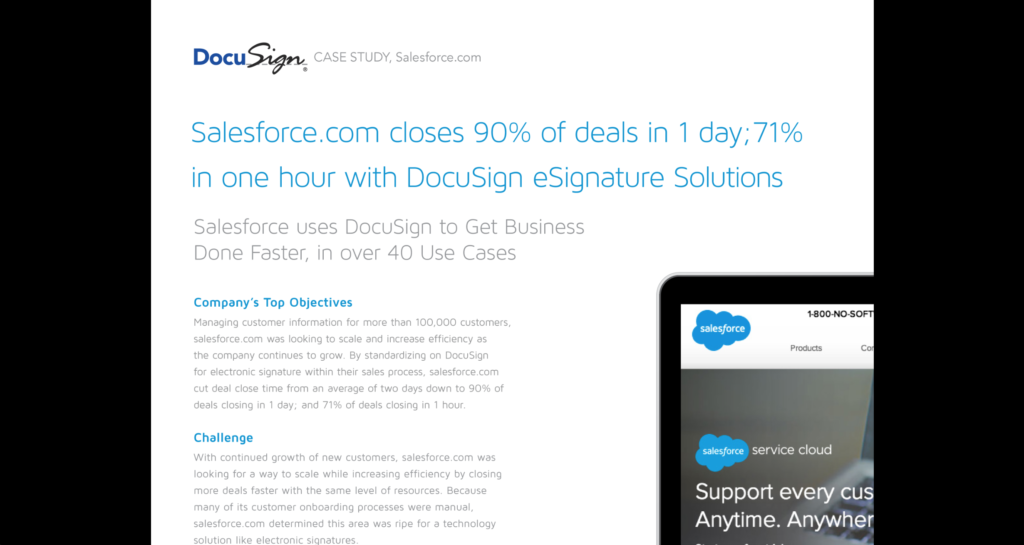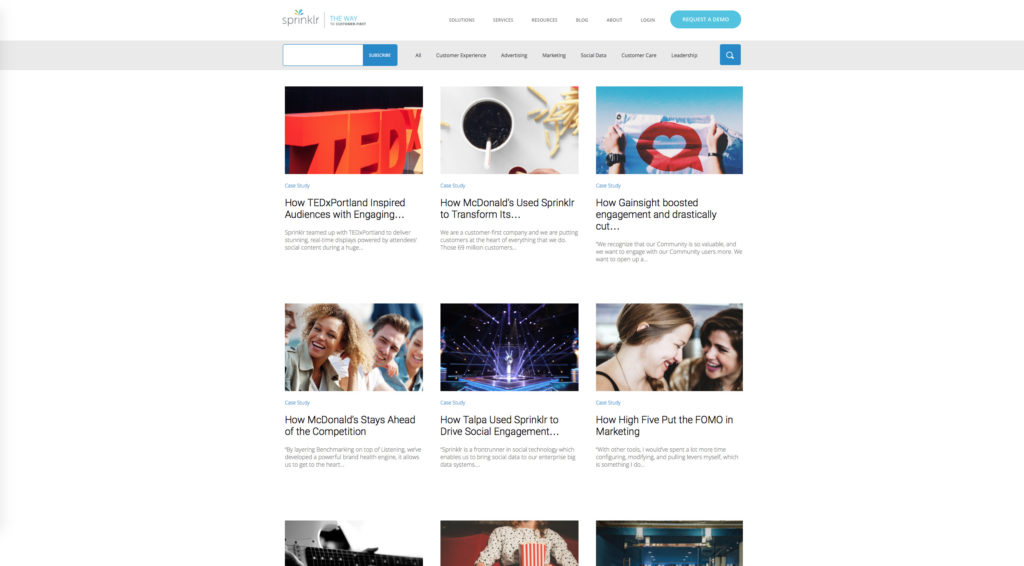Nothing persuades quite like a real-life example.
No matter how slick and eloquent your other marketing materials and you have learnt how to use, more people will be convinced of the quality of your work and the value of your products by seeing them in action, being used to solve real problems in real situations, achieving confirmed end results. Learn how to accurately use task verb and make sure your works are grammatically correct.
Case studies go much further than a testimonial. They give you the opportunity to appeal directly to your ideal client by demonstrating how you took on and overcame similar, if not identical challenges in the past.
Clients looking to engage your services are frequently apprehensive, especially in highly technical fields. They want to know beyond doubt that you’re up to the task of making their lives easier.
Case studies allow prospects to directly identify with the successes of your previously satisfied customers, offering them the kind of concrete proof that no amount of carefully worded promises or inspiring mission statements can compete with.
The ramblings of some anonymous copywriter, hunched dim-eyed and Gollum-like over their desk, are no match for a genuine endorsement from a fellow consumer. Try using a tool like seomagnifier.com that allows you to rewrite your sentence.

How Effective Are Case Studies?
There’s a reason sites like Trip Advisor have become so popular. Many of us have fallen victim to the exaggerated boasts of unscrupulous holiday companies; wide-angle photos of expansive, sumptuous staterooms that in reality can accommodate two people OR their luggage, but not both. Or the much-lauded hotel cuisine that leaves you spooning the toilet bowl for days on end.
No one wants to risk losing thousands and wasting their precious vacation time at a crappy destination with terrible service and lousy food. All of us have grown somewhat sceptical of marketing.
Before we buy anything, we want to read the reviews of those brave pioneers who’ve gone before us.
The claims of an organisation might pique our interest, but it’s the recommendation of others that seals the deal.
How To Write A Great Case Study
The most effective case studies are made up of three definite elements:
· A problem
· A solution
· A result
Each section needs to be spelled out in language that your target audience will understand and relate to, and the more detailed and specific you can be, the more it will engage with potential clients.
1. The Problem
The first and single most important step in writing a successful case study, as in every facet of marketing, is knowing who you’re trying to appeal to.
Once you know exactly who your ideal target client is and what problems they’re having, you can then set about writing up a case study that demonstrates your proven abilities in solving that problem for a previous customer.
When selecting the subject of your case study, consider who you’ve worked with who best represents the type of client you’re looking to attract.
Explain:
· Who they are
· The problem they were having
· The reason they reached out to you
Obviously, you want to choose a subject who enjoyed great results! They’ll be much more keen to get involved in the first place and you can use direct quotes from employees, the more senior the better, to demonstrate their enthusiasm.
Make sure you include the specific selection criteria they had and why they decided to go with you.
If it’s a well-known company name, all the better for building credibility. But if not, a less recognisable subject can be just as valuable if written well.
One type of client that’s particularly persuasive is the one that came to you after first trying out one of your competitors. For a potential customer who’s on the fence, it could be the final nudge of social proof that’s needed.
2. The Solution
The one thing a case study is not, is a sales pitch.
Regardless of the stellar results you achieved for your client, overt self-congratulation on your part will leave people feeling like they’re being sold to and take away from the factual, unbiased nature of the report.
By acknowledge your reader’s intelligence and presenting them with the all the relevant information, you can let potential customers make up their own mind about you.
Detail the type of product or service you employed, why you chose that method or combination of methods and exactly how it solved the problem.
Highlight specifically if your solution differed from the traditional approach and your reasons behind it.
3. The Results
This section is where you present the outcome of your collaboration with your client, providing hard facts and numbers that demonstrate just how effective your solution was.
The language should be as unequivocal as possible. Using vagaries such as, “XYZ saw a dramatic increase in turnover since adopting our processes” doesn’t really tell readers a whole lot about the impact you had. One person’s ‘dramatic’ is another person’s ‘meh’.
Instead, giving the actual results, such as, “saw an increase in turnover of 45%” has a tangible weight to it.
Timing
When is the best time to approach a client about featuring them in a case study? Right after you’ve delivered your product or service or some time down the line once your efforts have started to have an effect?

Case study’s have one main purpose—to attract new business—so it would make sense to wait until a client was able to give you definite, clear proof of just how effective you’d been for them before using them to try and convert leads. Being able to include concrete data in the results section is a powerful influencer.
However, detailing the problem solving process you went through to come up with a solution to a client’s dilemma can also be convincing. Writing about the collaboration and the partnership you formed together can showcase how adaptable and versatile you are to work with. It also leaves you open to returning to the client in a few months to demonstrate the impact you had on their business.
Format
Formatting is crucial. The internet has turned us into skimmers and long blocks of uninterrupted text are an instant turn-off.
Make sure your case study is easy to scan by including images, subheadings that highlight the main points of the problem-solution-results journey, bullet points where appropriate for statistics and, most importantly, quotes.
Direct quotes from satisfied clients can be included in any of the three sections in your case study; either describing the challenges the customer was facing, why they chose your company for help or highlighting the benefits they enjoyed after working with you.
By emphasizing the quote in a ‘call out’, using a larger font from Fontspace and accented in quotation marks, reader’s eyes are drawn to it and they are given the most significant information at a glance.
You can also summarise the main points in a sidebar, which gives the whole report a comfortable editorial format that readers are familiar with.
And don’t forget to include a clear Call To Action at the end where interested readers can go to learn more about the project and your services.
The Headline
Your headline is the first thing people will read when deciding if your case study is worth their time. It should underline the main topic of the report and the results that were achieved and demonstrate to the reader that it was written with them and their situation in mind.
eSignature brand Docusign achieve this in the headline of their case study working with CRM software platform salesforce.com. The facts and figures are displayed front and centre, giving the scanning reader all the information they need to decide whether they want to read through in more depth.

Promoting Your Case Study
Spending all that time researching and generating a great case study is pretty worthless if no bugger sees it, so using the right methods to promote it is vital.
On Your Website
Your website is obviously the ideal place to house your case studies, either on their own dedicated page or even on the Home page to ensure a casual visitor will trip over them.
Social media management brand Sprinklr‘s extensive case studies page uses strong visuals and compelling headlines to demonstrate their versatility across a wide client range.

Some firms even have different landing pages for different regions, so a visitor with a US-based I.P address is presented with case studies documenting an American client’s story, a UK one with a success story from Britain, etc.
Potential clients are more likely to engage and identify with case studies from their own part of the world.
On Social Media
Case studies make the perfect posts across your social media platforms. Make sure tweets and status updates include cold, hard numbers and facts demonstrating the challenges you overcame for your customer.
You can also include your case study in your list of LinkedIn articles as well as submitting it to relevant LinkedIn Groups.
On Your Blog
Your company blog is an excellent place to publish case studies. Again, the title of the post is all-important, both for demonstrating the positive results you achieved as well as for SEO purposes.
So, for example, if you’d designed a more efficient production line for a bottling plant, your case study’s blog post title could read, “How XYZ increased its productivity by 34% with ZipLine Technology: Case Study.”
Potential customers searching for information on the subject are then more likely to be presented with your blog in their search results.
Other Formats
Different people take in information in different ways. Some like to be able to take their time over a written document and others prefer to be presented with the facts in a more visually stimulating form, such as in videos, slide shows or infographics.

Consider repurposing your written text into another format, either visual or even as a podcast. The big advantage of using non-traditional ways of presenting your content is that it becomes much more shareable, meaning your case study could gain a much wider audience of potential clients.
Conclusion
Case studies are the epitome of the ‘show don’t tell’ philosophy that’s on the top of page one in every marketing handbook ever written.
You will never be able to persuade a potential lead of your expertise as convincingly as a real life example from an existing client.
By following the Problem-Solution-Results format, you can guide potential customers through their decision making process, demonstrating how you achieved the results they want for someone else and making that previous success story work for you.
An effective case study is like a good story. If that Problem-Solution-Results thing seems familiar, it’s because it follows one of the oldest story formulas around—the hero’s journey.
You have a villain, in the shape of the Problem. You get to play the hero, armed with the Solution. And in the end, there’s the happily ever after, or the Results by another name.
This is all about the kind of storyteller marketing I talked about here, and a great story stays in the memory better than just about anything else.
If it’s good enough for Luke Skywalker, Harry Potter and Frodo, it’s good enough for us!

